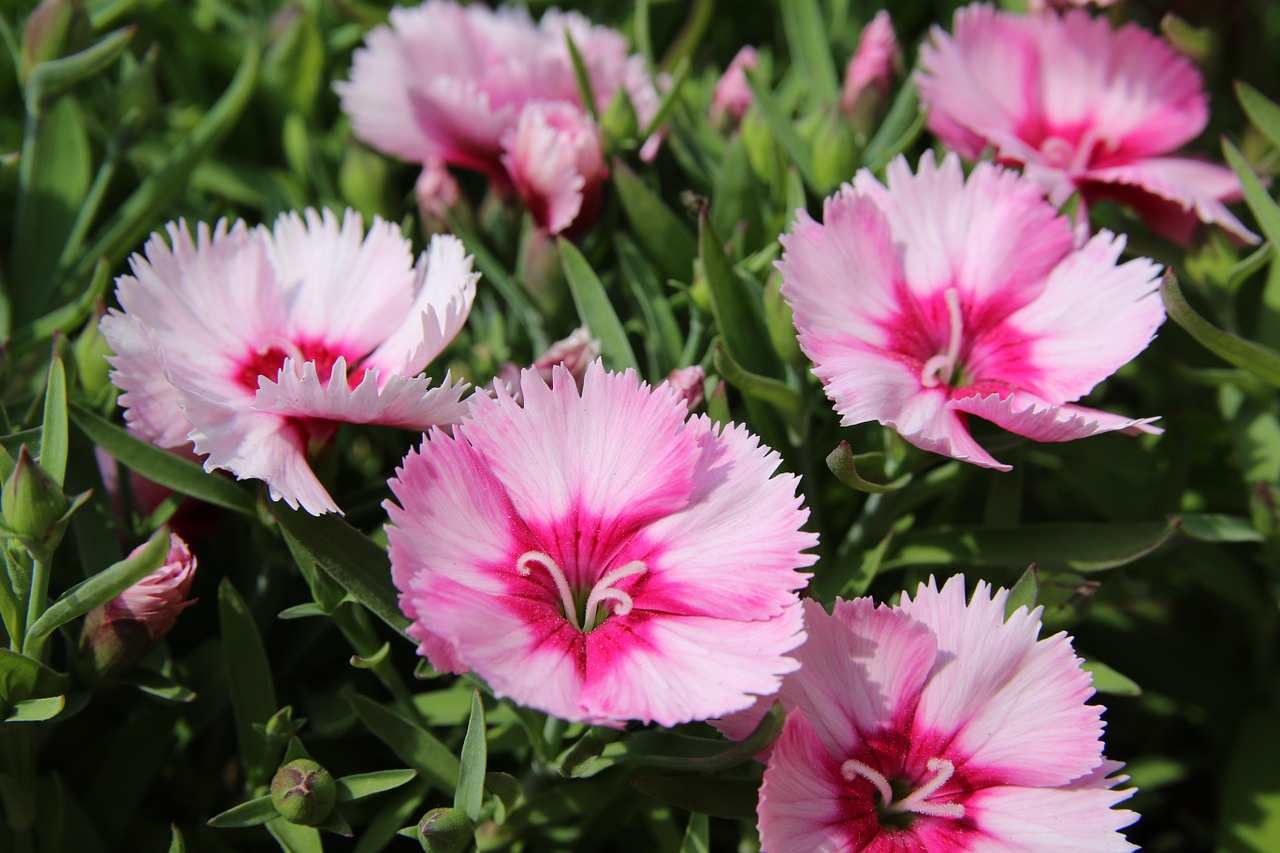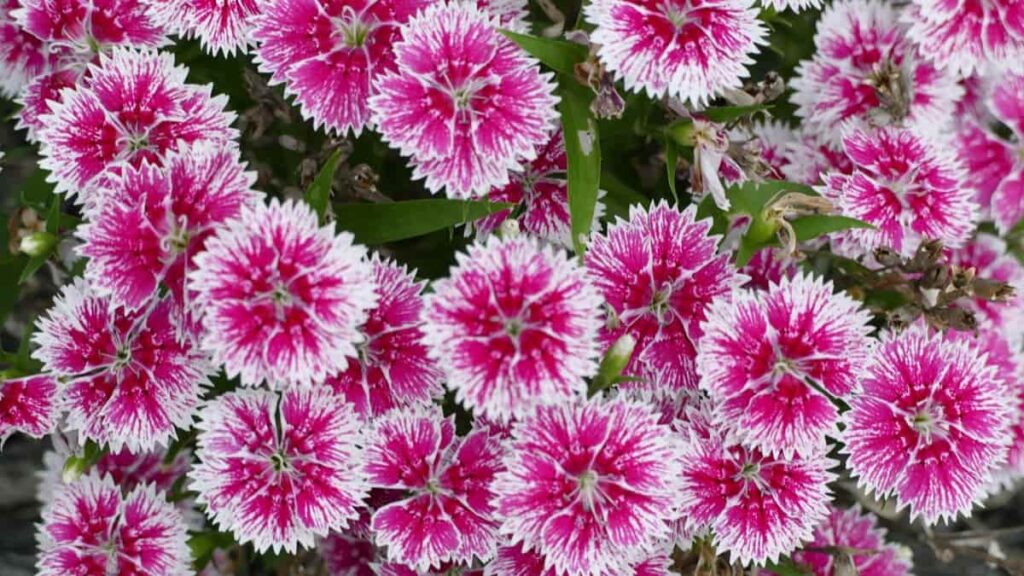Unveiling the Appearance of Dianthus Flowers
Dianthus is a type of flowering plant that has been a favorite among gardeners and flower enthusiasts for centuries. With over 300 species to choose from, Dianthus flowers come in a wide range of shapes, sizes, colors, and textures, making them a fascinating subject to explore. If you’re wondering what does a Dianthus look like, you’re not alone. In this comprehensive guide, we’ll delve into the world of Dianthus and uncover the unique characteristics that make each species special. From the delicate petals of the Carnation to the vibrant colors of the Sweet William, we’ll take a closer look at the distinctive features that set Dianthus flowers apart. Whether you’re a seasoned gardener or just starting to explore the world of flowers, this article will provide you with a deeper understanding of what makes Dianthus so unique and beautiful.
Identifying the Distinctive Features of Dianthus
Dianthus flowers are known for their unique and striking appearance, which sets them apart from other types of flowers. One of the most distinctive features of Dianthus is their shape, which can range from delicate and frilly to bold and statement-making. The petals of Dianthus flowers are often ruffled or serrated, adding to their intricate and eye-catching appearance. In terms of size, Dianthus flowers can vary greatly, from small and compact to large and showy. Some species, such as the Carnation, can produce flowers that are up to 3 inches in diameter, while others, such as the Sweet William, may produce smaller flowers that are around 1 inch in diameter.
The color of Dianthus flowers is also a key identifying feature. While many people associate Dianthus with pink and red hues, the flowers can actually come in a wide range of colors, including white, yellow, purple, and bi-colored. The texture of Dianthus flowers is another distinctive feature, with many species having a delicate, almost velvety texture. When trying to identify a Dianthus flower, it’s essential to take note of these characteristics, as they can help you determine the specific species and what it might look like.
How to Recognize Different Types of Dianthus
With over 300 species of Dianthus, it can be challenging to identify the different types. However, by paying attention to the unique characteristics of each species, you can develop a keen eye for recognizing the various types of Dianthus. One of the most well-known species is the Carnation, which is characterized by its large, showy flowers and sweet fragrance. Carnations are often used in floral arrangements and are a popular choice for bouquets and centerpieces.
Another popular species is the Sweet William, which is known for its delicate, frilly flowers and sweet fragrance. Sweet Williams are often used in cottage gardens and are a favorite among gardeners who appreciate their old-fashioned charm. Pinks, on the other hand, are a type of Dianthus that is characterized by its small, delicate flowers and spicy fragrance. Pinks are often used in rock gardens and are a popular choice for gardeners who appreciate their low-maintenance requirements.
To identify the different types of Dianthus, look for characteristics such as flower size, shape, and color. Also, pay attention to the foliage and growth habit of the plant, as these can also be distinctive features. For example, some species of Dianthus have a more compact growth habit, while others can grow quite tall. By paying attention to these characteristics, you can develop a better understanding of what does a Dianthus look like and how to identify the different types.
The Role of Color in Dianthus Identification
Color plays a significant role in identifying Dianthus flowers. With over 300 species to choose from, the color palette of Dianthus is incredibly diverse, ranging from pure whites and creams to vibrant pinks, reds, and purples. Some species, such as the Carnation, are known for their bold and bright colors, while others, such as the Sweet William, are more subdued and delicate. When trying to identify a Dianthus flower, pay attention to the color of the petals, as well as any patterns or markings that may be present.
One of the most distinctive features of Dianthus flowers is their ability to display a range of colors on a single bloom. This is known as “bi-coloring” or “tri-coloring,” and it can make identifying the flower more challenging. However, by paying attention to the specific color patterns and combinations, you can narrow down the possibilities and make a more accurate identification. For example, some species of Dianthus may have petals with a white or cream-colored base, gradually giving way to pink or red towards the tips.
When considering the color of a Dianthus flower, it’s also important to think about the overall appearance of the bloom. Are the petals delicate and frilly, or are they bold and statement-making? Are there any distinctive markings or patterns on the petals, such as stripes or spots? By taking all of these factors into account, you can develop a better understanding of what does a Dianthus look like and how to identify the different species.
Understanding the Growth Habit of Dianthus
Dianthus plants are known for their unique growth habits, which can vary greatly depending on the species. Some Dianthus plants are compact and bushy, while others can grow quite tall and leggy. Understanding the growth habit of a Dianthus plant can be helpful in identifying the species and distinguishing it from other plants. For example, Carnations are known for their upright growth habit, which can reach heights of up to 3 feet. Sweet Williams, on the other hand, have a more compact growth habit, typically growing to be around 1-2 feet tall.
The foliage of Dianthus plants is also an important characteristic to consider when trying to identify the species. Some Dianthus plants have narrow, grass-like leaves, while others have broader, more rounded leaves. The color of the foliage can also vary, ranging from bright green to grayish-green. By paying attention to the growth habit and foliage of a Dianthus plant, you can gain a better understanding of what does a Dianthus look like and how to identify the different species.
In addition to the growth habit and foliage, the spread of a Dianthus plant can also be an important characteristic to consider. Some Dianthus plants are quite spreading, while others are more upright and compact. By taking all of these factors into account, you can develop a more complete understanding of the Dianthus plant and its unique characteristics.
Common Mistakes to Avoid When Identifying Dianthus
When trying to identify Dianthus flowers, it’s easy to make mistakes. One common mistake is confusing Dianthus with other plants that have similar appearances. For example, some species of Dianthus can be mistaken for Sweet Alyssum or Baby’s Breath, due to their similar flower shapes and sizes. To avoid this mistake, make sure to examine the plant’s foliage and growth habit, as well as the shape and color of the flowers.
Another common mistake is misidentifying the color or shape of the flowers. Dianthus flowers can come in a wide range of colors, including pink, red, white, and purple. However, some species can have bi-colored or tri-colored flowers, which can make identification more challenging. To avoid this mistake, make sure to examine the flowers carefully and take note of any distinctive markings or patterns.
It’s also important to avoid relying too heavily on a single characteristic when trying to identify a Dianthus flower. For example, some species of Dianthus may have a distinctive shape or color, but this can vary depending on the growing conditions and the time of year. To avoid this mistake, make sure to consider multiple characteristics when trying to identify a Dianthus flower, including the shape and color of the flowers, the foliage and growth habit, and any distinctive markings or patterns.
Using Visual Aids to Identify Dianthus
Visual aids can be a powerful tool when trying to identify Dianthus flowers. Pictures, diagrams, and videos can provide a clear and detailed representation of the flowers, making it easier to identify their distinctive features. When using visual aids, make sure to examine the flowers carefully and take note of any distinctive markings or patterns.
One of the most effective ways to use visual aids is to compare pictures of different Dianthus species. This can help you to identify the unique characteristics of each species and distinguish between them. For example, you can compare pictures of Carnations, Sweet Williams, and Pinks to see the differences in their flower shapes, sizes, and colors.
Diagrams can also be useful when trying to identify Dianthus flowers. Diagrams can provide a detailed representation of the flower’s structure, including the shape and arrangement of the petals, sepals, and stamens. This can be especially helpful when trying to identify the different parts of the flower and how they relate to each other.
Videos can also be a useful visual aid when trying to identify Dianthus flowers. Videos can provide a dynamic and interactive representation of the flowers, allowing you to see how they move and change in different lighting conditions. This can be especially helpful when trying to identify the flowers in different stages of growth and development.
Conclusion: Mastering the Art of Dianthus Identification
Identifying Dianthus flowers can be a challenging but rewarding experience. By understanding the distinctive features of Dianthus, including their shape, size, color, and texture, you can develop a keen eye for recognizing these beautiful flowers. Remember to consider the growth habit, foliage, and color patterns of the plant, as well as any distinctive markings or patterns on the flowers.
By following the tips and techniques outlined in this article, you can master the art of Dianthus identification and become a confident and skilled flower identifier. Whether you’re a seasoned gardener or just starting to explore the world of flowers, identifying Dianthus flowers can be a fun and rewarding experience.
So, what does a Dianthus look like? With its delicate petals, vibrant colors, and distinctive markings, Dianthus is a flower that is sure to capture your attention. By taking the time to learn about the different species of Dianthus and how to identify them, you can develop a deeper appreciation for these beautiful flowers and enjoy them for years to come.






:max_bytes(150000):strip_icc()/perennial-dianthus-flower-1316045-12-766271448c9c4081ad05cf8b446a529e.jpg)